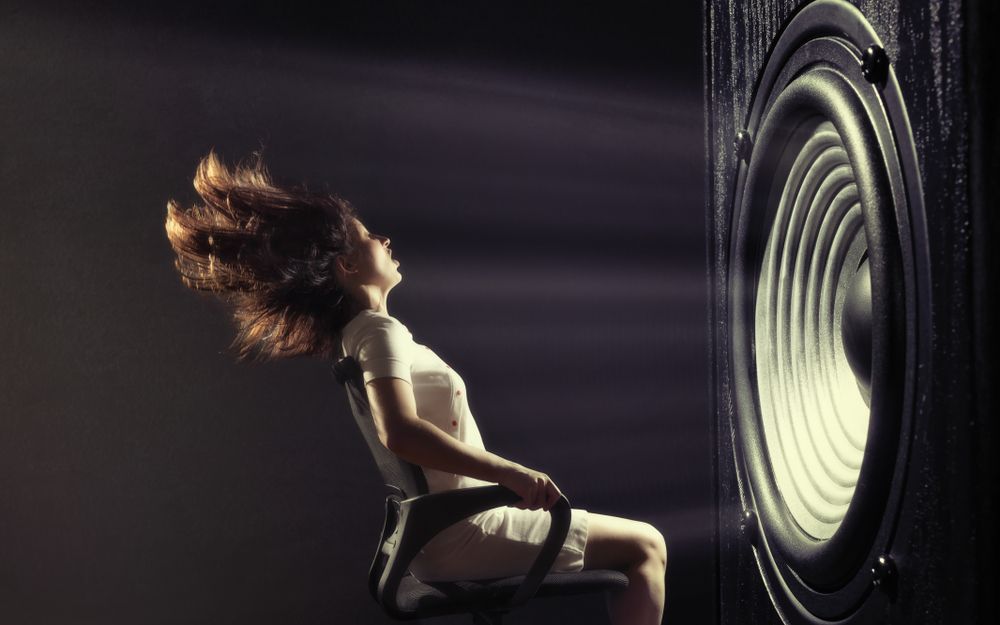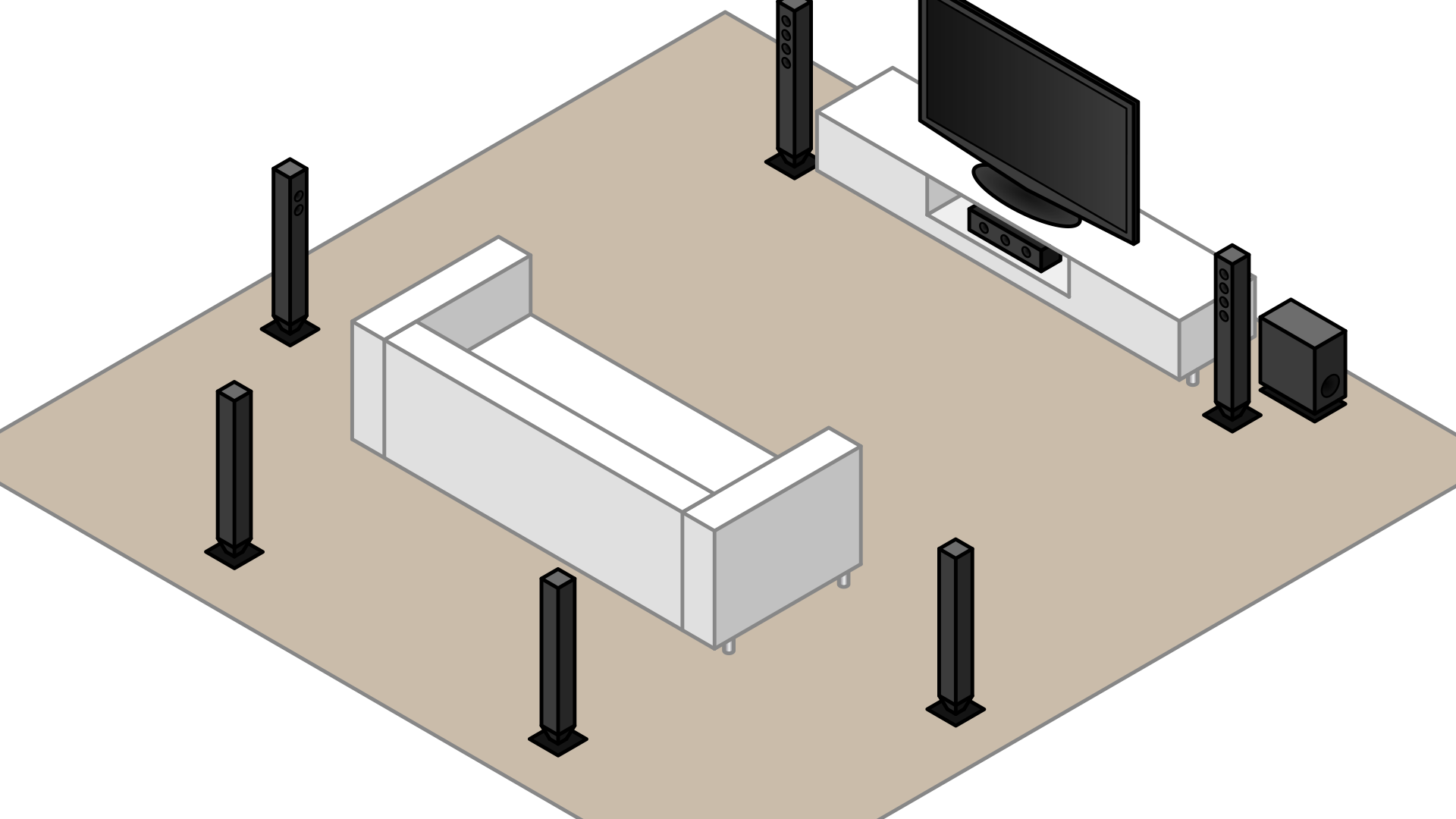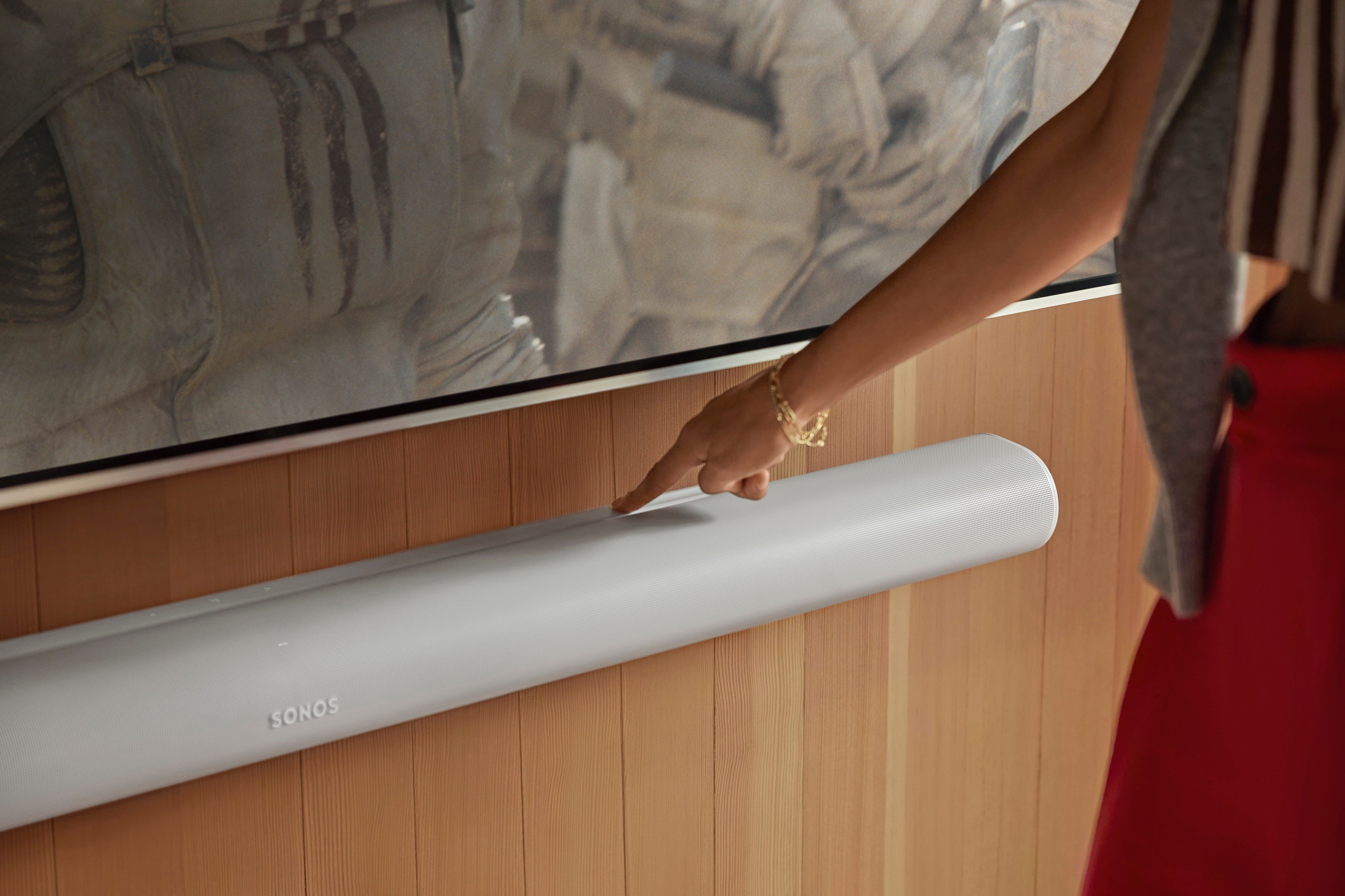Summary
- Muffled dialogue in movies and shows may signal your TV speakers are not handling the audio properly.
- A lack of bass in soundtracks may signify your TV speakers are incapable of producing a full range of audio.
- Noticeable distortion at higher volumes and difficulty hearing in larger or noisy rooms can indicate you need to invest in better audio gear.
- Consider upgrading to a soundbar, active speakers, or home theater system to improve your TV sound.
Your TV may wow me with its razor-thin design and stunning visuals, but falls flat (literally) when it comes to sound. So, how do you know when it’s time to invest in better audio gear?
You Hear Muffled Dialogue in Movies and TV Shows
These days, movies and shows are mixed with cinematic sound systems in mind. By that, I mean spaces where surround sound setups spread audio across multiple speakers. Dialogue is typically sent to the center channel, while music, sound effects, and ambiance fill the other speakers.
But when you’re watching a regular TV with built-in speakers, those speakers try (and fail) to compress all that audio into a single, small, and often underpowered system. So, what happens is that the dialogue, which usually sits in the mid-range of sounds, ends up buried under soundtrack layers and sound effects, making you rely on subtitles to catch what’s being said.
Now add to that the fact that modern TVs are designed to look stunning, not sound amazing. Slimmer screens mean less room for quality speakers, and the ones built into your TV are usually firing down or back instead of directly toward you. So it feels like you are trying to hear someone talk while they’re facing the wall.
There’s a Lack of Bass in Soundtracks
Bass is what gives soundtracks their “body.” Their emotional punch. Without bass, sound lacks depth, and everything you hear feels paper-thin. When a spacecraft rumbles past in sci-fi films, you should feel a sense of weight and movement. In nature documentaries, a lion’s roar should have that chest-thumping presence.
But if what you hear sounds more like a crinkly paper bag popping than a powerful blast, your TV’s audio is literally throwing away half the sound engineers’ work. It’s time for you to upgrade your sound.
You Hear Noticeable Distortion at Higher Volumes
Distortion at higher volumes happens because most TV speakers are designed to be thin enough to fit inside an ultra-slim frame. Unfortunately, audio quality is often sacrificed in the process.
What’s really happening is that as you increase the volume, the tiny drivers in your TV’s speakers are forced to push more air to create louder sounds. However, their small size and the cramped space they are in limit them. This results in a phenomenon called “clipping,” where the audio signal is compressed and loses clarity, leading to harsh, scratchy tones.
Difficulty Hearing Sound in Larger or Noisy Rooms
Sound behaves differently depending on the size and layout of your room. A TV that sounds acceptable in a cozy 10×12 bedroom might struggle in a 20×30 living room simply because the speakers aren’t powerful enough to fill the larger space effectively. In larger spaces, sound waves have to travel farther, which causes them to lose energy along the way, even if your TV volume is maxed out.
Noisy environments, on the other hand, introduce competing sounds that mask important audio details. For example, the hum of an air conditioner or the clatter of dishes in an open-plan kitchen can overlap with the frequencies of sound coming from your TV, making it harder for you to pick out what’s being said on the screen.
You Want to Experience Surround Sound
Imagine watching a horror film. With regular TV speakers, you’ll hear eerie music and maybe a scream or two. But, with a proper surround sound system, you’ll hear the soft creak of a door opening behind you, the faint whisper of wind brushing past your ear, and the sharp crack of footsteps on the floorboards to your left. Your brain is tricked into believing these sounds are in your real-world environment.
I bet that your TV speakers will never give you that experience. Once you’ve experienced real surround sound, you’ll never want to watch a movie with just your TV speakers.
So, What Can You Do About It?
If you’re not ready to dive into a full surround system, a high-quality soundbar with virtual surround sound technology is a solid starting point. Brands like Sonos, Bose, and Samsung have models that use clever sound engineering to mimic the effect of multiple speakers. While it won’t deliver the exact precision of a true surround setup, it’s a noticeable improvement over your TV’s built-in speakers.
Active speakers are also worth considering for even more flexibility without the commitment of a full surround system. These powered speakers come with built-in amplifiers so that you can skip the need for an external amp or AV receiver. Just keep in mind that it can be a bit of a pain if you plan to add more speakers later.
But, if you want to go all out into a full home theater setup to experience surround sound, you don’t need to dive straight into a 7.1 sound system. A 5.1 system—five speakers and one subwoofer—is often the sweet spot for most living rooms. Place the center speaker under or above your TV for dialogue clarity, two front speakers on either side for the main action, and two rear speakers behind your seating area for ambiance. The subwoofer handles the deep, rumbling bass.
If you find the 5.1 system to be overkill, you could go for a 2.1 system. With just two speakers (left and right) and a subwoofer, it’s a big step up from your TV’s built-in speakers without the extra complexity of rear or center channels.
While it won’t give you the full surround sound experience, a 2.1 system is ideal if you have a smaller space, or you are just a casual TV viewer. Thankfully, many soundbars double as 2.1 systems, combining the front speakers and subwoofer into one easy-to-use device.









